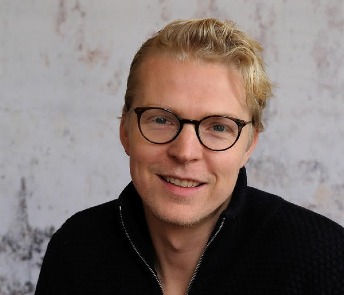Skater’s cramp and trial and error in elite sports

Imagine: you perform at a top level and do everything you can every day to get the best out of yourself and perform to the best of your abilities, but from one day to the next you can no longer do so. It happens to top skaters, as well as musicians or darts players, who have trained a specific skill for years. Former Olympic speed skater Beorn Nijenhuis studied this neurological phenomenon in speed skaters, which often marks the end of a career.
Nijenhuis examined the at times mysterious condition that he explains as task-specific dystonia, which is also known as skater’s cramp. Dystonia involves involuntary muscle contractions. A person might start making twisting movements without intending to. Skaters suffering from it experience a jerky movement in the foot at the end of a complete skate stroke, just before they land on the ice. If the skate then lands only slightly wrong, a fall is almost inevitable. So this type of dystonia occurs during a very specific task, Beorn Nijenhuis' research has shown.
Attention to body and mind
Skaters can be confronted with the condition overnight. The impact is significant, with as much as 65% of a group surveyed by Nijenhuis saying they were forced to end their careers because of it. 'It is difficult to say who is at risk for skater’s cramp, but we do know that a genetic component plays a role. There is little to be done about that per se, but overtraining, stress, and anxiety can be triggers—and therefore should be prevented.' Attention to mental health and alternating movements is therefore recommended. Nijenhuis compares it to following a healthy diet: 'We also know that it is better to have a varied diet than eating the same thing every time. Variation in exercise will also have a positive effect.'
Combination of strategies
There is no miracle pill for task-specific dystonia, and improving the situation is by no means easy. 'On the one hand, you can opt for a psychological approach, to reduce anxiety, and on the other hand you can try to learn to make the movement again.' Beorn Nijenhuis gives a telling example of how difficult this is: 'It can be compared to learning to write with your left hand while being right-handed or vice versa. We know from Spanish guitar players, for example, that it was so difficult to learn to use the same technique that it was easier to learn to play the guitar the other way around.' In addition to psychological and sensorimotor training, botox is also used to decrease muscle activity. 'A combination of these strategies probably works best,' Nijenhuis believes.
From top skater to researcher
Beorn Nijenhuis got the idea to conduct research on dystonia through his own sporting past. 'It occurred to me that my former speed skating coach Gerard Kemkers might have suffered from this mysterious movement disorder and that it seems to arise particularly when performing a specific task repeatedly. When I looked up information about this, I saw that only one person thought the same thing and had written an article about it in a physical therapy journal in 2014," Nijenhuis says. He got into a conversation with Marina de Koning-Tijssen, and so the foundation for the doctoral research was laid. Speaking about his future plans, he continues, 'I want to continue helping top performers improve complex motor movements and support those with task-specific dystonia to return to their baseline level.
Beorn Nijenhuis will receive his doctorate on June 13 at the University of Groningen/Campus Fryslân. Starting at 3 p.m., the promotion will be at the Beurs, Wirdumerdijk 34, and can also be followed online.
About Beorn Nijenhuis
Beorn is a former Olympic speed skater and national record holder in the 1000 meters for the Netherlands. He received his BSc and MSc in neuroscience from Utrecht University. At the Conservatory of Amsterdam he teaches about performance and the brain.
More news
-
15 September 2025
Successful visit to the UG by Rector of Institut Teknologi Bandung
